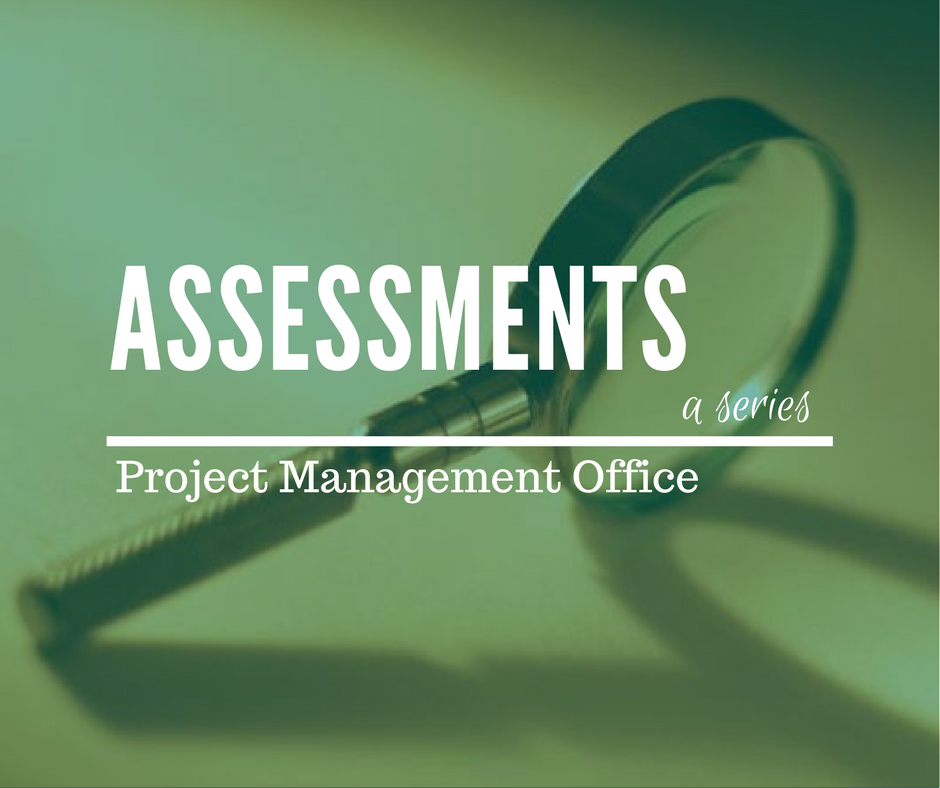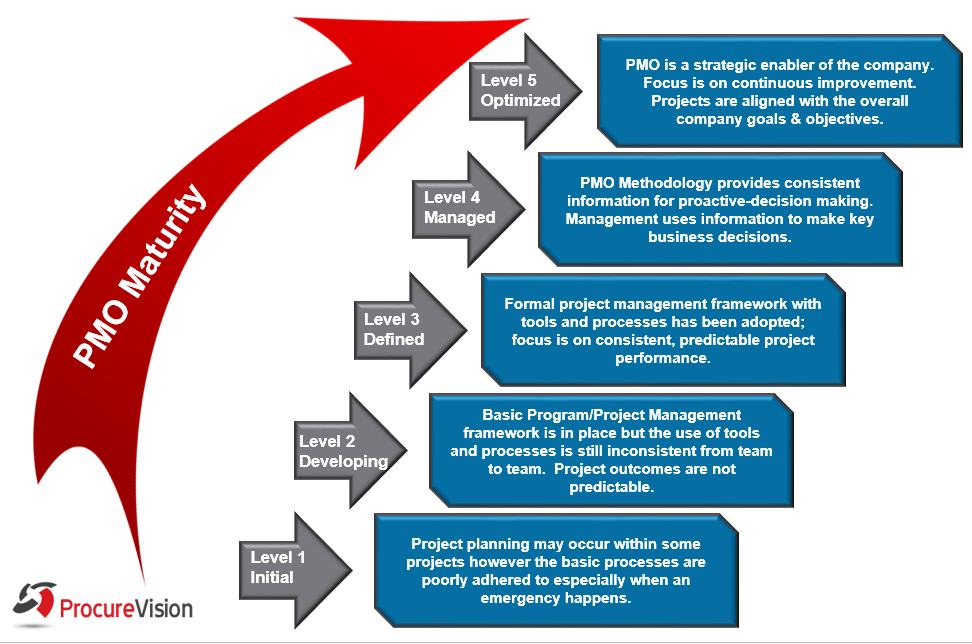|
There are significant benefits to periodically assessing the maturity of your PMO, and no shortage of maturity matrices to compare yourself to. Our PMO Maturity Matrix features five levels: Initial, Developing, Defined, Managed and Optimized When determining the maturity of a PMO we look specifically at four main areas:
In the second level of maturity most fledgling PMOs start to have tools and templates and some processes but not all projects use them. By the third level, Defined, we usually find a formal project management framework that has been adopted by all and a PMO organization focused on consistent, predictable project performance. PM processes are established, projects are reviewed regularly by a governing body and people are being trained and mentored, equipping them with the right skills for the projects they are assigned to. What is most exciting at the third stage is that an organization starts to reap significant benefits from their PMO. They can more reliably count on the project timelines and budgets and know that, with their guidance, their teams are equipped to succeed. Executives can start comparing projects based on the same, standard metrics allowing them to make critical decisions around resource allocation, budgets, schedules and critical milestones. By the fourth and fifth maturity stages, the organization relies heavily on transparency into their projects’ progress and objectives in order to make business decisions. The PMO data and information are key to the organization’s operation. Once you have determined what level of maturity your PMO is performing at, you may identify areas or aspects that are lagging. For instance you may be collecting standard project data monthly onto a paper template, but you would benefit by developing a database to collect project data and metrics so all have access and can compare projects online, in real time. Or maybe you identify areas that can mature to the next level. For instance, you have an IT PMO, but the entire organization's projects could benefit from its structure and methodology! Work with your PMO, project governance team, and project managers to determine which efforts would benefit your organization the most, and prioritize the efforts creating a roadmap for near-term, mid-term, and long-term accomplishments. Most organizations never get to the highest level of PMO maturity; the effort and cost to get there outweighs the benefits to some. Either way, a review of your PMO’s maturity will give you insights into what is working well and what could benefit from improvement. A Roadmap can help your organization keep its eye on the ball and reap the rewards of an increasingly mature PMO. Does your organization periodically assess the maturity of your PMO? Do you have a PMO Roadmap for continuous improvement?
0 Comments
Leave a Reply. |
Categories
All
|



 RSS Feed
RSS Feed